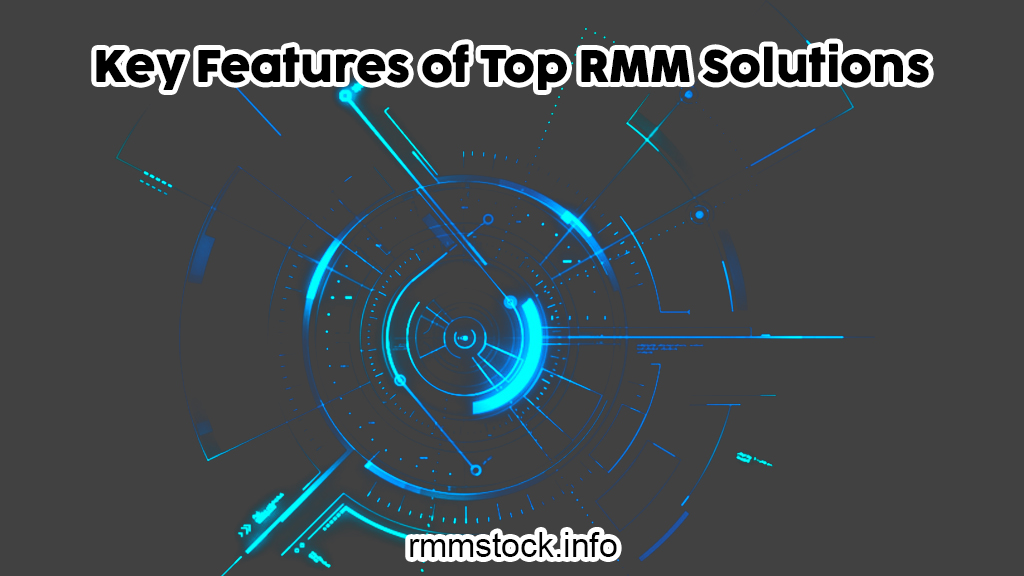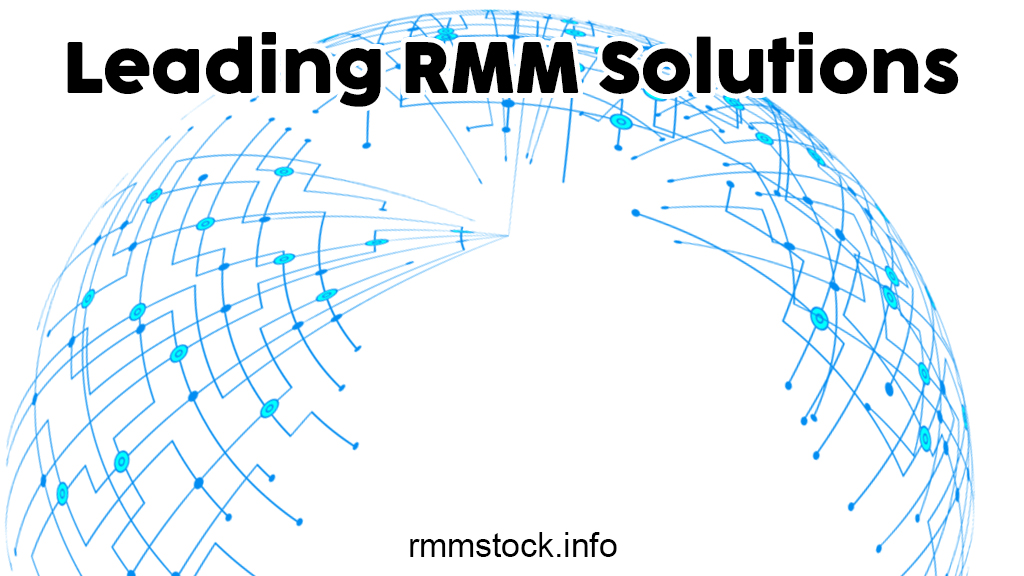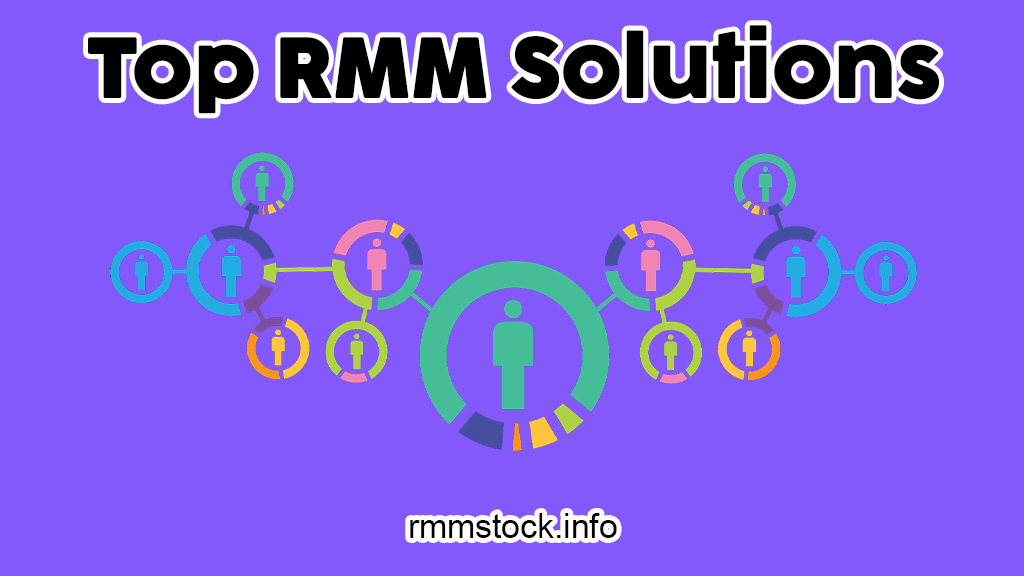In a world where technology is the backbone of business operations, ensuring seamless IT infrastructure management is not just a necessity but a critical component of success. Welcome to our deep dive into Remote Monitoring and Management (RMM) tools, the unsung heroes that keep your systems running smoothly, secure, and efficient.
Remote Monitoring and Management (RMM) tools have become indispensable for IT professionals, offering a streamlined approach to overseeing IT infrastructure. With businesses increasingly relying on technology, the need for robust RMM solutions is more crucial than ever. This article delves into the top RMM solutions available today, highlighting their features, benefits, and how they can transform IT management.
In the modern business landscape, effective IT management is pivotal. Remote Monitoring and Management (RMM) solutions play a vital role in ensuring systems run smoothly, minimizing downtime, and maintaining security. This article explores the leading RMM tools that are shaping the future of IT management, providing a comprehensive overview of their capabilities and advantages.
Join us as we explore the top RMM solutions that are revolutionizing IT management, helping businesses stay ahead in a rapidly evolving digital world.
Understanding Remote Monitoring and Management (RMM)
Remote Monitoring and Management (RMM) tools are indispensable software platforms utilized by Managed Service Providers (MSPs) and IT professionals to oversee and administer endpoints, networks, and computers from remote locations.
These tools enable proactive identification and resolution of potential issues, thereby minimizing the necessity for on-site visits and significantly enhancing overall operational efficiency.
By offering comprehensive visibility and control over the IT infrastructure, RMM tools facilitate continuous monitoring, maintenance, and management of client environments
Importance of RMM Solutions
RMM solutions are vital for businesses aiming to maintain optimal IT performance and security. They offer several significant benefits, including:
- Proactive Issue Resolution: By identifying and addressing issues before they escalate into major problems, RMM tools ensure minimal downtime and uninterrupted business operations.
- Enhanced Security: Continuous monitoring and automated responses help safeguard against cyber threats, ensuring that sensitive data and critical systems are protected.
- Improved Operational Efficiency: Automation of routine maintenance tasks frees up IT staff to focus on strategic initiatives, thereby boosting productivity and operational efficiency.
- Cost Savings on IT Management: Reducing the need for on-site visits and manual interventions leads to substantial savings in IT management costs. Businesses can manage more endpoints with fewer resources, maximizing their IT budget.
Key Features of Top RMM Solutions

Leading RMM Solutions in 2024

1. ConnectWise Automate
Overview: ConnectWise Automate, formerly known as LabTech, is a powerful RMM tool designed to automate IT service delivery. It is well-suited for Managed Service Providers (MSPs) and IT departments looking to enhance efficiency through automation.
Key Features:
- Extensive Automation Capabilities: Automates routine tasks, reducing manual workload.
- Robust Scripting Engine: Allows for the creation of complex scripts to automate a wide range of IT processes.
- Comprehensive Monitoring and Alerting: Provides real-time alerts and detailed monitoring of IT infrastructure.
- Integration with ConnectWise Manage and Control: Seamless integration with other ConnectWise products for a unified IT management experience.
Benefits:
- Enhanced Productivity Through Automation: Reduces the need for manual intervention, allowing IT teams to focus on strategic tasks.
- Improved Service Delivery: Ensures consistent and reliable IT service delivery through automation.
- Seamless Integration with Other ConnectWise Products: Facilitates a cohesive IT management environment, enhancing overall efficiency.
2. Datto RMM
Overview: Datto RMM is a cloud-based RMM solution known for its ease of use and comprehensive feature set. It is ideal for MSPs and IT departments seeking a user-friendly platform with robust capabilities.
Key Features:
- Intuitive Interface: Easy-to-use interface that simplifies IT management tasks.
- Real-Time Monitoring and Alerting: Continuous monitoring of IT assets with instant alerts for potential issues.
- Automated Patch Management: Ensures systems are always up-to-date with the latest patches and updates.
- Remote Control and Support: Provides remote access to endpoints for quick troubleshooting and support.
Benefits:
- Simplified IT Management: User-friendly design makes it easy for IT teams to manage and monitor IT infrastructure.
- Increased Operational Efficiency: Automation of routine tasks enhances overall efficiency.
- Reliable and Secure Platform: Ensures robust security and reliability for IT operations.
3. SolarWinds RMM
Overview: SolarWinds RMM offers a robust suite of tools for remote monitoring, management, and security. It is well-suited for MSPs looking for a comprehensive IT management solution.
Key Features:
- Advanced Monitoring Capabilities: Provides detailed insights into the performance and health of IT assets.
- Automated Patch Management: Keeps systems secure and up-to-date with automated patching.
- Integrated Antivirus and Backup: Enhances security and data protection through integrated solutions.
- Customizable Dashboards and Reports: Allows for tailored reporting and visualization of key metrics.
Benefits:
- Comprehensive IT Management: Offers a wide range of tools for effective IT management.
- Enhanced Security: Integrated security features ensure robust protection of IT assets.
- Customizable and Scalable Solution: Flexible to meet the needs of businesses of all sizes.
4. Kaseya VSA
Overview: Kaseya VSA is an all-in-one RMM solution that combines endpoint management, network monitoring, and IT automation. It is designed for MSPs and IT departments seeking a unified IT management platform.
Key Features:
- Unified IT Management Platform: Provides a single interface for managing all IT operations.
- Automated IT Processes: Automates routine IT tasks to reduce manual effort.
- Remote Control and Troubleshooting: Allows for remote access and troubleshooting of endpoints.
- Integration with Other Kaseya Products: Seamless integration with the Kaseya suite for enhanced functionality.
Benefits:
- Streamlined IT Operations: Unified platform simplifies IT management.
- Reduced Downtime: Proactive monitoring and automation reduce the likelihood of system failures.
- Improved Service Delivery: Ensures consistent and reliable IT services.
5. N-able N-central
Overview: N-able N-central is a scalable RMM solution tailored for MSPs and IT departments of all sizes. It offers comprehensive monitoring and management capabilities.
Key Features:
- Comprehensive Monitoring and Management: Provides detailed insights and control over IT infrastructure.
- Automation and Scripting: Automates routine tasks and allows for custom scripting.
- Security and Backup Integration: Enhances security and data protection with integrated solutions.
- Customizable Reporting: Allows for the creation of tailored reports to meet specific business needs.
Benefits:
- Scalable to Meet Business Needs: Flexible solution that grows with the business.
- Enhanced Automation: Reduces manual workload through extensive automation capabilities.
- Robust Security Features: Ensures strong protection of IT assets through integrated security solutions.
How to Choose the Right RMM Solution
1. Assess Your Business Needs
Understanding your specific IT management needs is the first step in selecting the right RMM tool. Consider factors such as the size of your IT infrastructure, the complexity of your systems, and your budget. Identify the primary pain points you want to address, such as frequent downtime, security vulnerabilities, or inefficient manual processes.
Determine the scale of your operations and the level of support required for remote and on-site devices. Additionally, outline your financial constraints to ensure that the RMM solution fits within your budget.
2. Evaluate Features and Capabilities
Compare the features and capabilities of different RMM solutions. Look for tools that offer real-time monitoring, automated maintenance, remote access, and robust reporting.
Assess the comprehensiveness of each solution’s monitoring capabilities, including network, server, and endpoint monitoring. Evaluate the automation features, such as patch management, software updates, and routine maintenance tasks.
Ensure that the remote access capabilities allow for seamless troubleshooting and support. Robust reporting and analytics should provide valuable insights into system performance and security.
3. Consider Ease of Use
An intuitive interface and ease of use are critical factors. Ensure that the RMM tool is user-friendly and that your IT team can quickly adapt to it.
A steep learning curve can hinder productivity and lead to user frustration. Opt for solutions that offer a clean and organized dashboard, easy navigation, and comprehensive documentation or training resources. User-friendly tools enhance the efficiency of your IT team and reduce the time required to manage and monitor IT infrastructure.
4. Check Integration Options
Ensure that the RMM solution can integrate with your existing IT management tools. This will help create a seamless and efficient IT management environment.
Integration with tools such as ticketing systems, antivirus software, backup solutions, and network management tools can streamline workflows and improve coordination among different IT functions. Verify the compatibility and ease of integration with your current software stack to avoid potential disruptions and ensure smooth operations.
5. Review Security Features
Security is paramount in IT management. Choose an RMM solution that offers comprehensive security features, including antivirus, patch management, and backup capabilities.
Evaluate the tool’s ability to detect and respond to security threats in real-time. Ensure that it provides automated patch management to keep systems up-to-date with the latest security patches. Backup capabilities are essential for data protection and disaster recovery. Look for additional security features such as endpoint protection, encryption, and multi-factor authentication to safeguard your IT infrastructure.
Benefits of Implementing RMM Solutions
1. Increased Efficiency
RMM tools automate routine tasks, freeing up IT staff to focus on more strategic initiatives. This leads to increased efficiency and productivity.
Automated maintenance tasks, such as software updates, patch management, and system optimizations, are performed without manual intervention. This not only ensures consistency but also allows IT teams to allocate their time and resources to more critical projects and innovation.
2. Proactive Issue Resolution
With real-time monitoring and automated alerts, RMM solutions enable proactive issue resolution, minimizing downtime and ensuring business continuity.
Continuous monitoring helps in the early detection of potential issues, allowing IT teams to address them before they escalate into major problems. Automated alerts notify IT staff of any anomalies or critical events, ensuring swift intervention and reducing the impact on business operations.
3. Cost Savings
By reducing the need for on-site visits and manual intervention, RMM tools help in cutting down IT management costs.
Remote access capabilities allow IT professionals to troubleshoot and resolve issues from any location, eliminating travel expenses and reducing the time required for on-site support. Automation of routine tasks reduces labor costs and increases operational efficiency, leading to significant cost savings in IT management.
4. Enhanced Security
RMM solutions provide robust security features, protecting your IT infrastructure from potential threats and vulnerabilities.
Continuous monitoring and automated patch management ensure that systems are always up-to-date with the latest security patches. Integrated antivirus and endpoint protection safeguard against malware and cyber-attacks. Backup and disaster recovery capabilities protect data integrity and ensure business continuity in case of data loss or system failures.
5. Improved Service Delivery
Automated maintenance and comprehensive reporting enhance service delivery, ensuring that IT systems are always running optimally. Regular maintenance tasks are performed without manual intervention, reducing the risk of system failures and performance degradation.
Detailed reports and analytics provide insights into system health, performance trends, and security status, enabling IT teams to make informed decisions and optimize operations. Improved service delivery translates into better user experiences and higher satisfaction for end-users and clients.
Challenges in Using RMM Solutions
1. Initial Setup and Configuration
The initial setup and configuration of RMM tools can be complex and time-consuming. This process often involves installing agents on all endpoints, configuring monitoring and alerting parameters, and integrating the RMM tool with other existing systems.
Proper planning and training are essential to ensure a smooth implementation. IT teams may need to allocate significant time and resources to understand the tool’s capabilities, customize it to meet their specific needs, and address any technical issues that arise during the setup phase.
Without thorough preparation, the implementation process can lead to disruptions in IT operations and delays in realizing the benefits of the RMM solution.
2. Integration with Existing Systems
Integrating RMM solutions with existing IT management tools can be challenging. Compatibility issues may arise, requiring additional effort to resolve.
Each organization’s IT environment is unique, with a mix of legacy systems, third-party applications, and custom software. Ensuring seamless integration between the RMM tool and these systems can be complex, often necessitating custom scripts or additional middleware.
Failure to achieve smooth integration can result in data silos, inefficiencies, and incomplete visibility into the IT infrastructure. IT teams must carefully evaluate the compatibility of the RMM solution with their existing tools and be prepared to address any integration challenges.
3. Continuous Monitoring and Updates
RMM tools require continuous monitoring and updates to ensure they function correctly. IT teams must stay vigilant and keep the software up-to-date. Regular updates are necessary to address security vulnerabilities, add new features, and improve performance.
However, managing these updates can be challenging, especially in large or complex IT environments. IT teams need to establish processes for testing and deploying updates without causing disruptions.
Continuous monitoring is also essential to ensure the RMM tool itself does not become a point of failure or vulnerability. Maintaining the RMM solution’s health is critical for its effectiveness in managing the broader IT infrastructure.
Future Trends in RMM Solutions
1. Artificial Intelligence and Machine Learning
The integration of AI and machine learning in RMM tools will enhance predictive maintenance, automate complex tasks, and improve overall efficiency.
AI can analyze vast amounts of data to identify patterns and predict potential issues before they occur, allowing for proactive maintenance. Machine learning algorithms can continuously learn from the IT environment, optimizing performance and automating routine tasks.
These technologies will enable RMM tools to provide more accurate and timely alerts, reducing false positives and enhancing the IT team’s ability to manage and resolve issues efficiently.
2. Enhanced Security Features
As cyber threats evolve, RMM solutions will incorporate more advanced security features to protect IT infrastructure from sophisticated attacks. Future RMM tools will likely include advanced threat detection and response capabilities, such as behavioral analysis, intrusion detection, and automated incident response.
Integration with security information and event management (SIEM) systems and other cybersecurity tools will become more seamless, providing a unified approach to IT and security management. These enhancements will help organizations stay ahead of emerging threats and ensure robust protection for their IT assets.
3. Increased Automation
Future RMM tools will offer more advanced automation capabilities, reducing the need for manual intervention and further streamlining IT management processes.
Automation will extend beyond routine tasks to more complex processes, such as automated remediation of issues, dynamic resource allocation, and intelligent workload balancing.
Advanced scripting and workflow automation will enable IT teams to define and execute complex sequences of actions automatically, enhancing efficiency and reducing human error. This increased automation will allow IT teams to focus on strategic initiatives, driving innovation and business growth.
4. Cloud-Based RMM Solutions
Cloud-based RMM solutions will continue to gain popularity due to their scalability, ease of use, and reduced infrastructure costs. These solutions offer the flexibility to scale up or down based on the organization’s needs, without the need for significant capital investment in hardware.
Cloud-based RMM tools can be deployed quickly and easily, with minimal setup and maintenance requirements. They also provide the ability to manage IT infrastructure from anywhere, making them ideal for organizations with distributed workforces or multiple locations. As businesses increasingly adopt cloud technologies, cloud-based RMM solutions will become the standard for IT management.
Conclusion
In today’s technology-driven world, Remote Monitoring and Management (RMM) solutions are essential for effective IT management. By providing real-time monitoring, automated maintenance, and comprehensive reporting, these tools enable businesses to maintain optimal IT performance, enhance security, and reduce costs.
The top RMM solutions highlighted in this article offer a range of features and benefits, making them valuable assets for any IT professional. As technology continues to evolve, the future of RMM solutions looks promising, with advancements in AI, automation, and security paving the way for even more efficient IT management.
